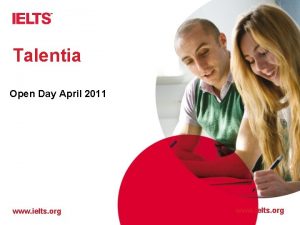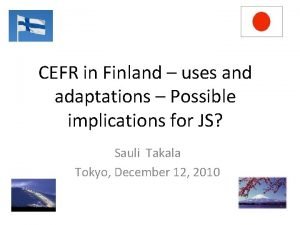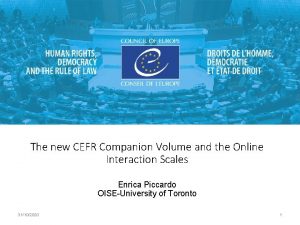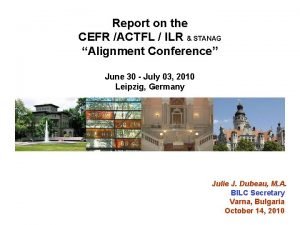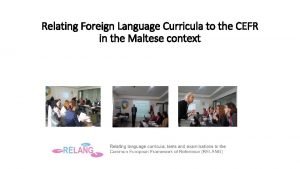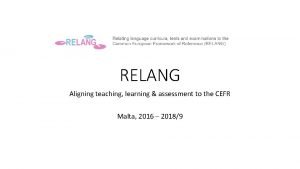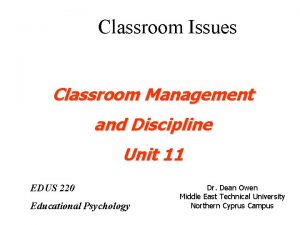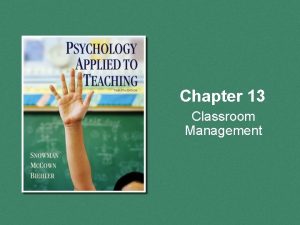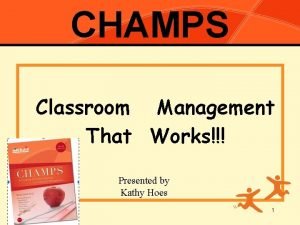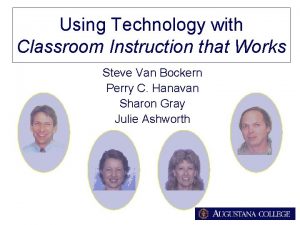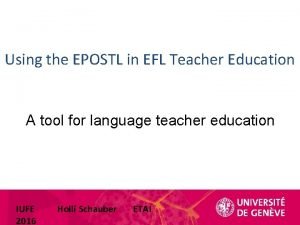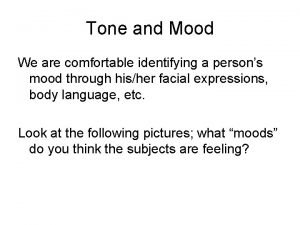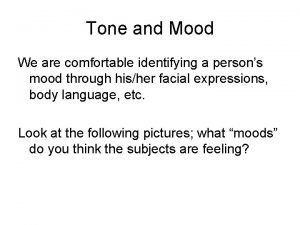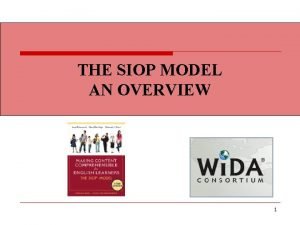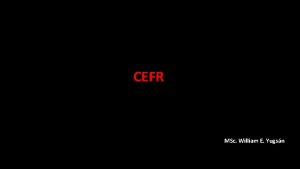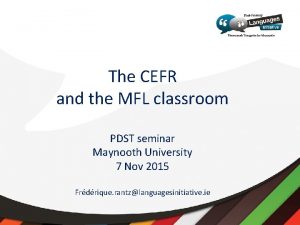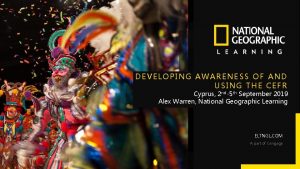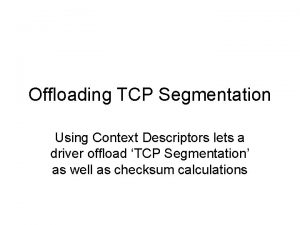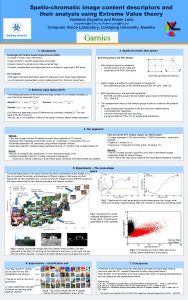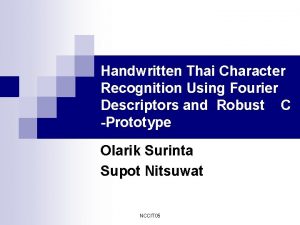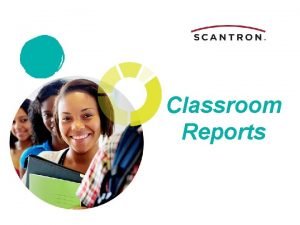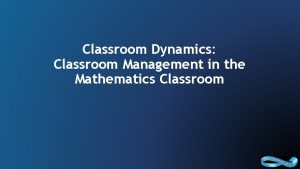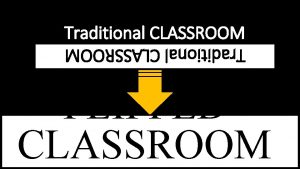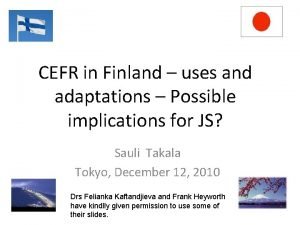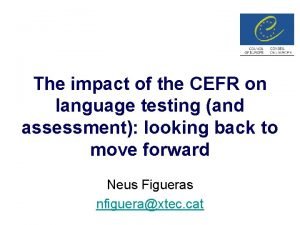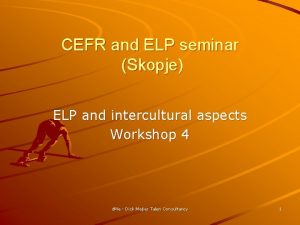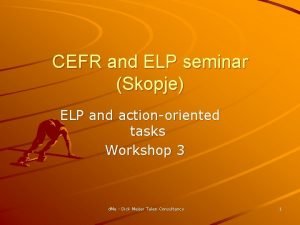Using the CEFR in classroom work approach descriptors
























- Slides: 24

Using the CEFR in classroom work: approach, descriptors, levels Waldek Martyniuk ECML Graz, Austria

The CEFR n Published 2001 n 40 language versions (February 2009) n The concept of a (growing) toolkit

The CEFR

CEFR - the Stonehenge Metaphor ‘Why Stonehenge was built is unknown, though it probably was constructed as a place of worship of some kind. Notions that it was built as a temple for Druids or Romans are unsound, because neither was in the area until long after Stonehenge was last constructed. Early in the 20 th century, the English astronomer Sir Norman Lockyer demonstrated that the northeast axis aligned with the sunrise at the summer solstice, leading other scholars to speculate that the builders were sun worshipers. In 1963 an American astronomer, Gerald Hawkins, purported that Stonehenge was a complicated computer for predicting lunar and solar eclipses. These speculations, however, have been severely criticized by most Stonehenge archaeologists. ’ “Most of what has been written about Stonehenge is nonsense or speculation, ” said R. J. C Atkinson, archaeologist from University College Cardiff. “No one will ever have a clue what

The CEFR – core elements Comprehensive description of language user/learner and language use/learning n Common reference levels of language proficiency n Scales of illustrative descriptors n Self-assessment scales n Curriculum scenarios for a coherent approach to plurilingual education n

The CEFR – potential Common „language” for all stakeholders n Tool for: n „Situating one’s effort”: assessing and improving quality of actions n Coherent policy planning n Transparency, compatibility, comparability, coherence n Mutual recognition, mobility n Promoting lifelong language learning n

The CEFR – core qualities Autonomous learner in focus n Action oriented approach n Positive can-do statements n Valuing all competences n Profiling competences n Reference levels and scales n Self-assessment n Plurilingualism in education n

Impact of the CEFR on language education n At learner/citizen level – the ELP n At institutional level n At national level n At European level n At international level

Language use/learning and language users/learners „Language use, embracing language learning, comprises the actions performed by persons who as individuals and as social agents develop a range of competences, both general and in particular communicative language competences. They draw on the competences at their disposal in various contexts under various conditions and under various constraints to engage in language activities involving language processes to produce and/or receive texts in relation to themes in specific domains, activating those strategies which seem most appropriate for carrying out the tasks to be accomplished. The monitoring of these actions by the participants leads to the reinforcement or modifications of their competences. ”

Competences n n General competences of a language user/learner n Knowledge (savoir) n Skills and know-how (savoir-faire) n Existential competence (savoir-être) n Ability to learn (savoir-apprendre) Communicative language competences of a language user/learner n Linguistic n Pragmatic n Sociolinguistic n Sociocultural

Scales n Communicative language competences n Linguistic, Pragmatic, Socio-linguistic n Communicative language activities n Reception, Interaction, Production, (Mediation) n Communicative language strategies n Reception, Interaction, Production

Communicative Language Competences n Linguistic Competence n Pragmatic Competence > > > General Linguistic Range Vocabulary Range Grammatical Accuracy Vocabulary Control Phonological Control Orthographic Control Flexibility Turntaking Thematic Development Cohesion and Coherence Propositional Precision Spoken Fluency n Sociolinguistic Competence > Sociolinguistic Appropriateness > > > > >

Activities: Reception n Listening Comprehension > > Understanding conversation between native speakers Listening as a member of an audience Listening to announcements and instructions Listening to audio media and recordings Watching TV and film n Reading Comprehension > Reading correspondence Reading for orientation (skimming and scanning) Reading for information and argument Reading instructions > > >

Activities: Interaction n Spoken Interaction > > Understanding a native-speaker interlocutor Conversation Informal discussion Formal discussion and meetings Goal-oriented co-operation Transactions to obtain goods and services Information exchange Interviewing and being interviewed n Written Interaction > Correspondence Notes, messages and forms > > > >

Activities: Production n Spoken Production > > Sustained monologue: Describing experience Sustained monologue: Putting a case (e. g. in debate) Public announcements Addressing Audiences n Written Production > Creative Writing Reports and Essays > > >

Strategies n Reception Strategies n Production Strategies > Identifying cues/ inferring > Planning Compensating Monitoring and Repair > n Interaction Strategies > Turntaking Cooperating Asking for clarification > > >

Illustrative Descriptors Informal Discussion: Level B 2: > “Can take an active part in informal discussion in familiar contexts. ” > “Can with some effort catch much of what is said around him/her in discussion, but may find it difficult to participate effectively in discussion with several native speakers who do not modify their language in any way. ” > “Can account for and sustain his/her opinions in discussion by providing relevant explanations, arguments and comments. ”

Common Reference Levels n > n > CEFR Table 1: Global Summary Scale One entry per level summarising the scales for Spoken & Written Reception, Interaction and Production CEFR Table 2: Self-assessment grid Five entries per level: for profiling Listening, Reading Spoken Interaction, Spoken Production, Writing CEFR Table 3: Speaking assessment grid example Five entries per level: for profiling Range, Accuracy, Fluency, Coherence, Interaction CEFR Scales and sub-scales 54 scales in a hierarchical structure

Implementing the plurilingual concept of the CEFR in (language) education means to: Raise awareness of the value of being plurilingual in a multilingual European society n Use strategic planning and adopt a global, coherent language policy n Encourage all students and staff to learn languages n Encourage students and staff to learn a variety of languages n

Implementing the plurilingual concept of the CEFR in (language) education means to: Promote and support intercultural mobility of students and staff n Attract and integrate international students n Provide good quality CLIL in a variety of languages n Encourage and educate both language teachers and language students to become plurilingual – not just bi-lingual n

Implementing the plurilingual concept of the CEFR in (language) education means to: Secure good quality of language instruction n Increase the number of languages on offer n Support independent learning n Support co-operative learning n Make wise use of technology and media n

Implementing the plurilingual concept of the CEFR in (language) education means to: Cater for individual needs n Adopt a „positive”, „added value” approach n Integrate out-of-school experience and proficiency n Teach how to learn languages n Support learner autonomy n

Implementing the plurilingual concept of the CEFR in (language) education means to: Set clear and achievable objectives n Value all linguistic and intercultural competences, even at modest level n Provide valid, reliable, fair and transparent assessment n Secure comparability and compatibility of outcomes n Use a common framework of reference in communication with stakeholders n

More information on the Council of Europe language education policies, initiatives and instruments: www. coe. int/lang www. coe. int/portfolio www. ecml. at Thank you for your kind attention!
 Ielts to cefr
Ielts to cefr Cefr levels toefl
Cefr levels toefl Cefr level english
Cefr level english Cefr companion volume 2020
Cefr companion volume 2020 Communicative achievement meaning
Communicative achievement meaning Ilr to cefr
Ilr to cefr Language
Language Cefr analyzer
Cefr analyzer Greek vocabulary tool
Greek vocabulary tool Sourima mal
Sourima mal Assertive approach in classroom management
Assertive approach in classroom management Group managerial approach in classroom management
Group managerial approach in classroom management Antiseptic bouncing
Antiseptic bouncing Direct method in teaching grammar
Direct method in teaching grammar Champs discipline
Champs discipline Wordle solver
Wordle solver Using technology with classroom instruction that works
Using technology with classroom instruction that works Tools for classroom instruction that works
Tools for classroom instruction that works Epostl descriptors
Epostl descriptors Mood descriptors
Mood descriptors What is tone
What is tone Mood descriptors
Mood descriptors Siop and tap have similar descriptors and indicators
Siop and tap have similar descriptors and indicators Descriptors junior cycle
Descriptors junior cycle Ust transmutation table
Ust transmutation table
